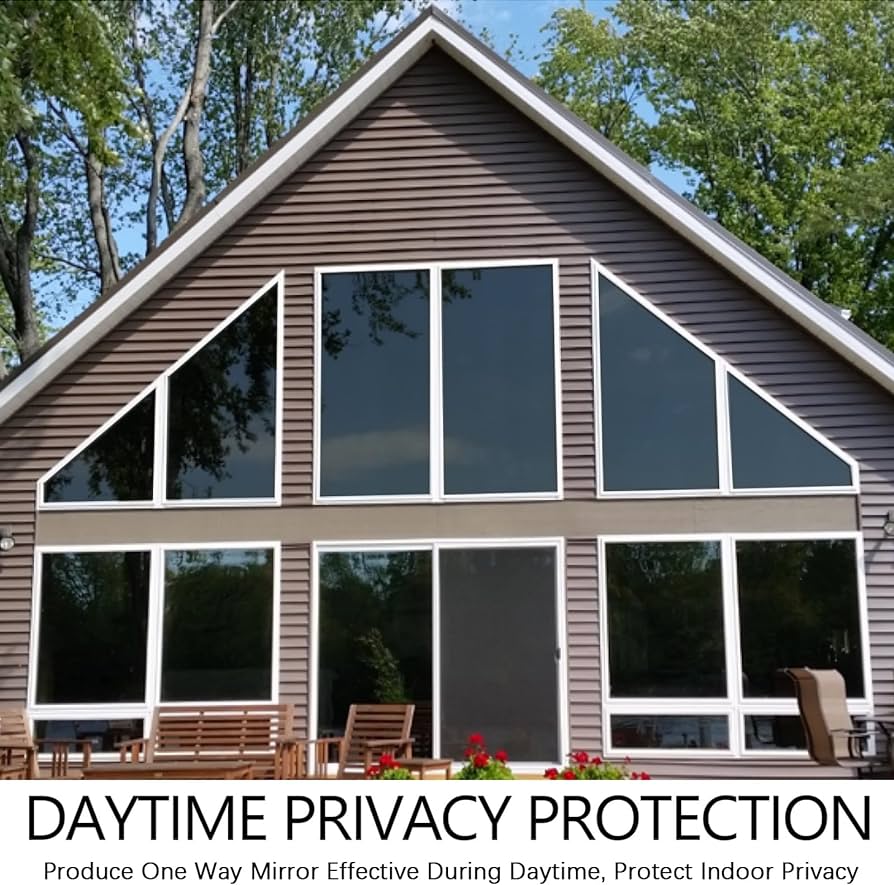Why Residential Window Tint is a Smart Financial Investment for Homeowners
Why Residential Window Tint is a Smart Financial Investment for Homeowners
Blog Article
How Residential Home Window Tinting Improves Your Home's Energy Efficiency
Residential window tinting provides a compelling service for property owners seeking to enhance energy performance within their living spaces. By using specialized movies to home windows, it efficiently minimizes warmth transfer, therefore stabilizing interior temperature levels and minimizing the demand for too much heating or cooling.
Recognizing Window Tinting
Understanding home window tinting is vital for home owners looking for to boost both convenience and energy efficiency in their space. Residential Window Tint. Window tinting involves the application of a slim film to the interior or exterior surface area of glass windows. This film can substantially regulate the amount of sunshine and heat that enters a home, hence affecting interior climate conditions
There are various kinds of window tinting films readily available, each with distinct residential properties. Dyed movies soak up solar power, while reflective films disperse it away from the glass surface. Ceramic films supply a balance of visibility and warmth denial, making them a preferred choice amongst house owners. The performance of home window tinting is frequently gauged by its Visible Light Transmission (VLT) percentage, which indicates how much light can go through the movie.
Benefits of Power Efficiency
Window tinting not only enhances looks but also plays a substantial duty in boosting power performance within residential areas. By reducing warmth transfer with windows, colored films create an extra secure interior climate, which can result in substantial decreases in energy intake for heating and air conditioning. This energy performance equates right into reduced utility expenses, giving house owners with significant lasting savings.

In addition, window tinting improves the convenience of living areas. By lessening glow and blocking unsafe UV rays, colored windows develop a more pleasurable atmosphere, which can result in enhanced health for passengers. The defense versus UV rays likewise assists protect furnishings and floor covering from fading, adding to the long life of household items.
Exactly How Tinting Works
Tinting films run with a mix of innovative products and modern technologies designed to control the amount of solar power getting in a home. Primarily made up of polyester, these films often incorporate ceramic or metallic fragments that absorb and show warm. This double capacity permits them to significantly reduce the penetration of ultraviolet (UV) rays and infrared radiation while allowing visible light to go through.
The effectiveness of home window tinting is measured by its solar warmth gain coefficient (SHGC), which suggests just how much solar energy is sent via the home window. Lower SHGC values are more effective as they represent better warmth denial. In addition, window tints can feature a variety of shades, allowing house owners to tailor their visual preferences while improving energy effectiveness.
Moreover, these movies function as a barrier, preventing warmth loss during colder months by mirroring indoor warmth back into the home. This thermal insulation impact matches the cooling benefits visit site obtained during warmer months, adding to a well balanced indoor climate year-round. By managing solar power effectively, household home window tinting not only improves comfort however additionally plays a crucial function in decreasing power consumption and decreasing energy expenses.
Choosing the Right Color

There are numerous kinds of home window films available, including colored, metalized, and ceramic. Ceramic films provide superb warmth control without endangering presence and are highly resilient, making them a preferred choice.
Visible light transmission (VLT) is another important factor, as it suggests the quantity of all-natural light that can pass with the colored glass. Homeowners should choose a color with a VLT that matches their illumination choices while still providing ample glow reduction.
Furthermore, analyzing the solar warm gain coefficient (SHGC) can assist establish how well a tint can obstruct warmth from sunlight. A reduced SHGC suggests much better warm control, ultimately boosting power efficiency.
Installation and Upkeep Tips
Appropriate installment and upkeep are important elements in making best use of the advantages of household window tinting. Professionals also make use of specialized techniques and tools, which can enhance the toughness and effectiveness of the tint.
Following installation, upkeep is crucial to extend the life of the home window movie. It is advised to wait at the very least 30 days before cleaning up the tinted home windows to permit the adhesive to heal fully.
Addressing these problems immediately can protect against additional damages and preserve energy effectiveness. By adhering to these installment and maintenance tips, homeowners can ensure their window tinting continues to offer significant energy financial savings and convenience for years to come.
Final Thought
Finally, household home useful reference window tinting works as an efficient solution for improving energy efficiency within homes. By minimizing heat transfer and obstructing hazardous UV rays, window movies add to lower power usage and boosted interior convenience. The selection of suitable tinting materials, together with correct installment and upkeep, even more optimizes these benefits. Eventually, window tinting stands for a lasting investment that not just reduces utility costs but likewise advertises a comfy living atmosphere throughout the year.
Window tinting includes the application of a slim movie to the interior or outside surface area of glass windows. By reducing warm transfer with home windows, colored films develop an extra stable interior climate, which can lead to significant decreases in energy intake for home heating and air conditioning.The performance of window read this tinting is determined by its solar warm gain coefficient (SHGC), which suggests how much solar energy is sent via the window. By handling solar energy properly, domestic window tinting not only enhances comfort however also plays an essential function in lowering power intake and reducing energy costs.
By minimizing warmth transfer and obstructing dangerous UV rays, window films contribute to reduce energy intake and boosted indoor comfort.
Report this page